- News
- Reviews
- Bikes
- Accessories
- Accessories - misc
- Computer mounts
- Bags
- Bar ends
- Bike bags & cases
- Bottle cages
- Bottles
- Cameras
- Car racks
- Child seats
- Computers
- Glasses
- GPS units
- Helmets
- Lights - front
- Lights - rear
- Lights - sets
- Locks
- Mirrors
- Mudguards
- Racks
- Pumps & CO2 inflators
- Puncture kits
- Reflectives
- Smart watches
- Stands and racks
- Trailers
- Clothing
- Components
- Bar tape & grips
- Bottom brackets
- Brake & gear cables
- Brake & STI levers
- Brake pads & spares
- Brakes
- Cassettes & freewheels
- Chains
- Chainsets & chainrings
- Derailleurs - front
- Derailleurs - rear
- Forks
- Gear levers & shifters
- Groupsets
- Handlebars & extensions
- Headsets
- Hubs
- Inner tubes
- Pedals
- Quick releases & skewers
- Saddles
- Seatposts
- Stems
- Wheels
- Tyres
- Health, fitness and nutrition
- Tools and workshop
- Miscellaneous
- Buyers Guides
- Features
- Forum
- Recommends
- Podcast
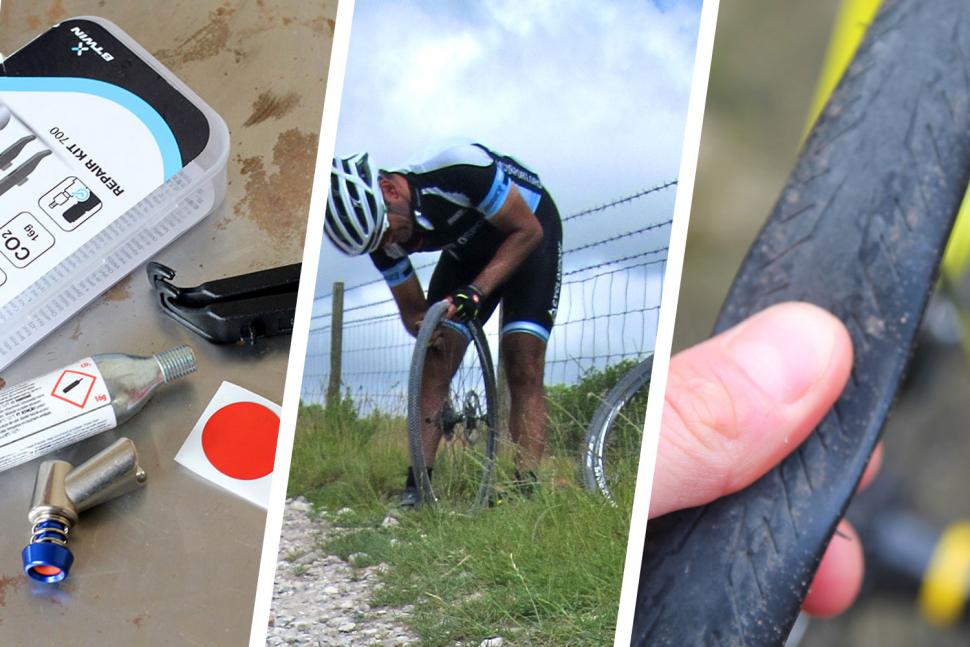 puncture
puncturePuncture prevention 101: learn how to swerve flats with these 11 top tricks
There's nothing much worse than a puncture to ruin a bike ride, whether it's commuting to work in the rain or a leisurely Sunday ride in the hills. Is it possible to completely avoid punctures? In truth, not really, but there are some things you can do to try and minimise the opportunity for a flat tyre to ruin a bike ride. Here are some tips from the road.cc staff.
Puncture resistant tyres
Not all bicycle tyres are created equal. Some are designed to be light and fast, some are designed to resist punctures and be durable. Whether you’re riding a carbon race bike or a commuting bike, fitting a pair of tyres with some sort of puncture protection can be a really good step towards minimising your chances of getting a flat.
- road.cc People's Choice: Your favourite cycling tyres revealed
Puncture resistant tyres are manufactured with materials designed to prevent the penetration of sharp objects, like glass or flint, from slicing through the tyre rubber and reaching the inner tyre. A layer of Kevlar or similar tough material is added to light road bike tyres, and when weight is less of a concern (such as for commuting and touring) an extra layer of rubber is added under the tread.
Puncture resistant tyres will carry a bit of a weight penalty, but if you want to avoid flats, it’s a small price to pay.
Tubeless tyres
The reason you get a puncture is the inner tube being pierced by a sharp object cutting through the tyre, like a nail, thorn or piece of glass. Remove the inner tube and there’s nothing to puncture. Better still, replace the inner tube with dedicated sealant, which can plug smaller holes, and you can virtually eliminate flat tyres. Cars and most motorbikes use tubeless tyres (without sealant) and it's becoming more popular in the road bike world.
- Road tubeless: everything you need to know
Going tubeless can involve a bit more of an upfront investment. You need tubeless compatible rims and tyres, but increasingly new road bikes are coming with tubeless-ready rims, so you might just be a tyre upgrade away from going tubeless. With special valves and a bottle of sealant and a bit of know-how (read this guide) you can ditch the inner tubes for good.
We’re big fans of tubeless here at road.cc - numerous members of the team have done entire winters without any flats riding tubeless.
- Guide: How to fit tubeless tyres
Change your inner tubes
Inner tubes can vary a lot, from super light latex inner tubes to chunky butyl inner tubes. Butyl tubes are more common, but they’re not all made the same. Regular ones commonly use 1mm thick rubber, but super light versions can reduce the rubber thickness down to 0.6mm, but along with the reduced weight comes an increased risk of puncturing.
- Buyer's guide to inner tubes — how to save weight, ride faster or prevent flats with new tubes
Some people claim that latex inner tubes can actually prevent punctures because the material can deform around a sharp object.
“The latex stretches and deforms around the body which is trying to penetrate the tube instead of it trying to resist the body and shortly after being punctured through,” says tyre manufacturer Challenge. “The highly elastic latex material is much more difficult to puncture.”
Latex tubes lose air pressure and need regular topping up, though, and while they are much lighter than butyl tubes, they're more expensive, and there’s no guarantee they’ll prevent a flat. For everyday riding, you probably don’t want fewer punctures to come at the expense of daily inflation.
Another option is to use inner tubes filled with sealant. The liquid contains small rubber particles that dries on exposure to air. It works a bit like a tubeless setup, but the inner tube is filled with the sealant, so easier to fit and less mess involved. There is a weight penalty though. There are some aftermarket products like Slime (tested here) but if you have inner tubes with removable inner cores, you can add sealant to regular tyres.
This solution does add weight to the entire wheel but if eliminating punctures is your key priority, it might be the right solution for you. It would be a good step for daily commuting and touring bikes, where weight isn’t such a high concern. Partner with puncture resistant tyres and you have a pretty good puncture prevention setup.
Solid tyres
What if you remove the air cavity in a conventional pneumatic tyre setup completely? Some companies have dabbled with solid tyres in the past, with varying levels of success, and so far they’ve not really offered a serious rival to the performance and cost of regular tyres and inner tubes.
Tannus is one company that is investing in the technology, and we have been impressed with its most recent tyre which offers a surprisingly good ride performance. Fitting is more complicated than regular tyres and makes tubeless look a doddle. But there’s no way of puncturing a solid tyre, so for a commuting bike, a solid tyre offers some advantages.
Pump up your tyres
It’s worth checking the pressure in your tyres. Are you running your tyres too soft? A very soft tyre is more likely to puncture when riding over a rough road and it’s possible to pinch the inner tube between the tyre and rim if you hit a pothole with sufficient force. In mountain biking, this is called a “snake bite” because inspection of the inner tube will reveal two neat holes either side of the inner tube.
The maximum* tyre pressure will be printed on the side wall of the tyre - if you pump them up to that you'll at least know they are not too soft. Having a pump with a pressure gauge is any easy way to ensure the tyres are suitably inflated. Pressure gauges are pretty cheap and a good investment if you do a lot of riding, and removes the guesswork.
(*Not to be confused with the optimum or recommended tyre pressure - sometimes the max tyre pressure and the recommended pressure - the pressure at which the tyre performs best - are the same thing, but often they're not. In terms of a road tyre you won't go far wrong if you pump them up to 100psi and you can easily go 10psi less with a tubeless tyre… That's the potted version, in truth the subject of optimum tyre pressures is a whole other feature.)
If you don’t have a pressure gauge, press the tyre firmly with two thumbs.You can tell pretty easily if it feels too soft by how much you’re able to deform the tyre.
Check for worn tyres
When’s the last time you checked your tyres? A worn tyre is more likely to puncture because there’s less rubber tread on the tyre. Some tyres have wear indicators (small holes) so check these regularly, especially if you do a lot of miles every week, to ensure you’re not riding with worn out tyres.
It’s also worth checking regularly for flint and glass embedded in the tyre. There are two schools of thought on whether you should leave or remove any objects in the tyre. Some say once an object its embedded in the tyre, it’s unlikely to puncture the tube, but some people say you’re just playing the waiting game until it bites the inner tube.
We prefer to remove any we find. Use a pair of tweezers to remove any objects embedded in the tyre and discard in the bin. If any big holes are left vacant, get some superglue and carefully fill the hole.
Pick your line
Avoid riding over gravel or other debris on the road and definitely avoid riding over broken glass. Also, avoid riding through puddles where possible in case they hide potholes. Don’t ride in the gutter of the road as this is where much of the debris lurks that could puncture a tyre as passing cars tend to push all the gravel, grit, flint and thorns out to the edge of the road.
Don’t ride in the rain
You might notice you get more flats in the rain. This is because rain acts as a lubricant and helps flint and glass to slice through the rubber of a tyre. You also tend to find that debris from the gutter of the road and the hedgerows gets washed out into the bit of the road you tend to cycle along.
It's that combination of rain and debris in the road that is the reason you tend to get more punctures in the winter.
- Buyers guide: The best tyres to keep you cycling through winter
Don’t leave the house
We’re joking. Well, half-joking. I know somebody who managed to get a puncture on the turbo trainer (no idea how) so even in the safety of your own living room, you’re never far from a puncture.
Never mention the P word
Never ever mention the word puncture if you’re about to set off on a ride, or during a ride. Don’t joke about how you’ve not had a puncture in months because next thing you know you’ll be stood by the side of the road fixing a flat. Best just to avoid all talk of punctures and instead talk about the weather or something.
Be prepared for a puncture
While you can take some prevention against a flat tyre, it pays to be prepared and always take one or two spare inner tubes and a decent pump with you on a ride. You might want to consider a couple of inner tube patches as well, especially for longer rides in bad weather. A small saddle bag can easily be stuffed with enough spares to get you out of a spot of bother and not add much weight to the bike.
Got any good tips you use to avoid punctures?
David worked on the road.cc tech team from 2012-2020. Previously he was editor of Bikemagic.com and before that staff writer at RCUK. He's a seasoned cyclist of all disciplines, from road to mountain biking, touring to cyclo-cross, he only wishes he had time to ride them all. He's mildly competitive, though he'll never admit it, and is a frequent road racer but is too lazy to do really well. He currently resides in the Cotswolds, and you can now find him over on his own YouTube channel David Arthur - Just Ride Bikes.
Latest Comments
- ktache 7 min 22 sec ago
Obviously can't be trusted, antisocial, ban motor vehicles...
- ktache 12 min 8 sec ago
But getting paid for it is the very definition of professional....
- ktache 20 min 44 sec ago
Never had a Shimano QR fail on me. They just work. And the top end ones look good too....
- Backladder 1 hour 6 min ago
If you're only looking at the guy in front of you then you're going to crash whatever brakes you have, you need to look beyond them to anticipate...
- jaysa 1 hour 32 min ago
As a woman, this works great for me! My chain broke once, and a kind guy stopped with a chain breaker and sorted it all out for me. We stopped at a...
- andystow 2 hours 23 min ago
Same. I also have gone through a bunch of their tyres, and only the extralight disappointed (torn sidewall) but the standards are fantastic....
- chrisonabike 4 hours 21 min ago
Indeed - but it's no more inconsistent than our current road design - very often UK high streets are "for shopping" and also a busy through route....
- mike the bike 5 hours 51 min ago
If you ask the world's leading economic commentators how many people have been rescued from abject poverty by capitalism the average answer would...
- The Larger Cyclist 6 hours 15 min ago
loads of parking

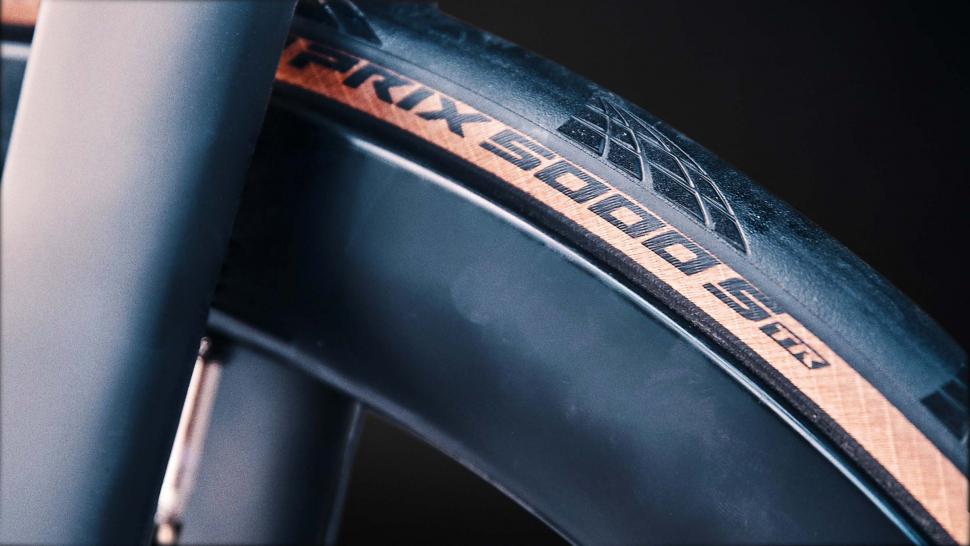
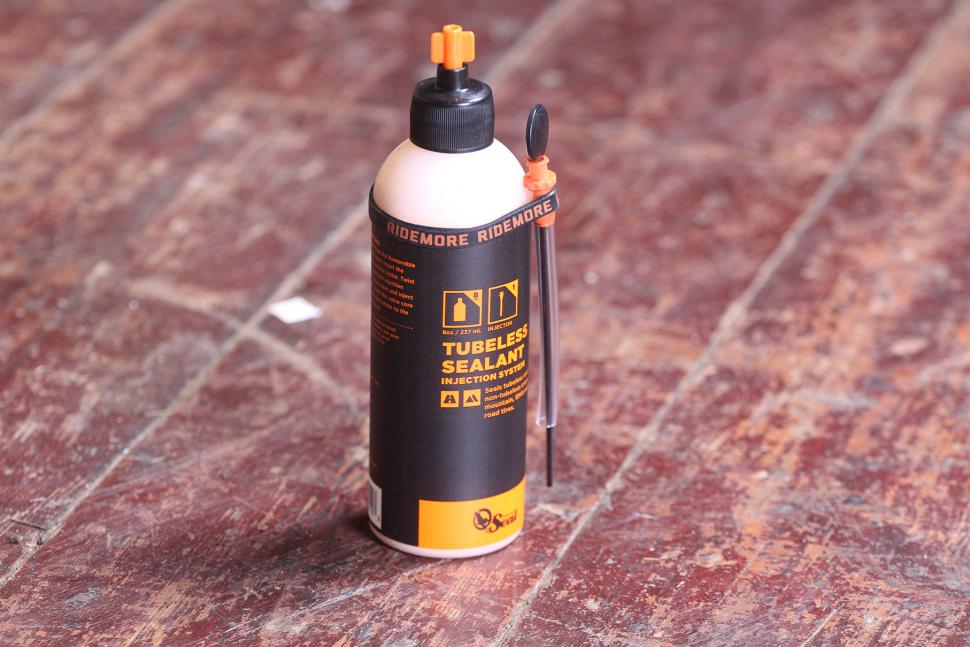
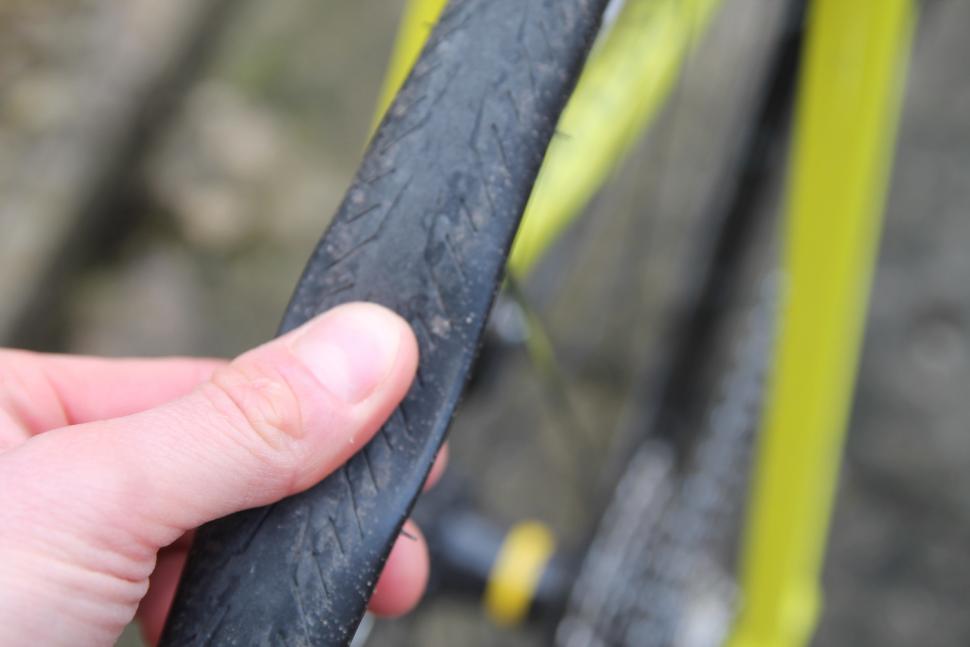
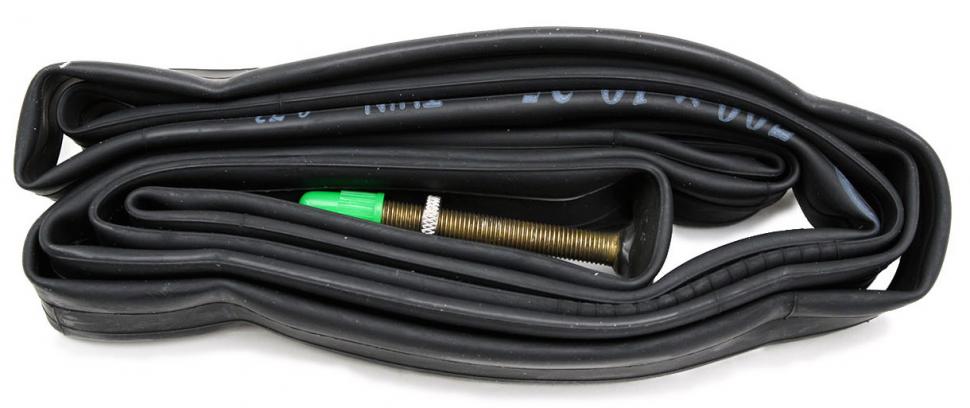
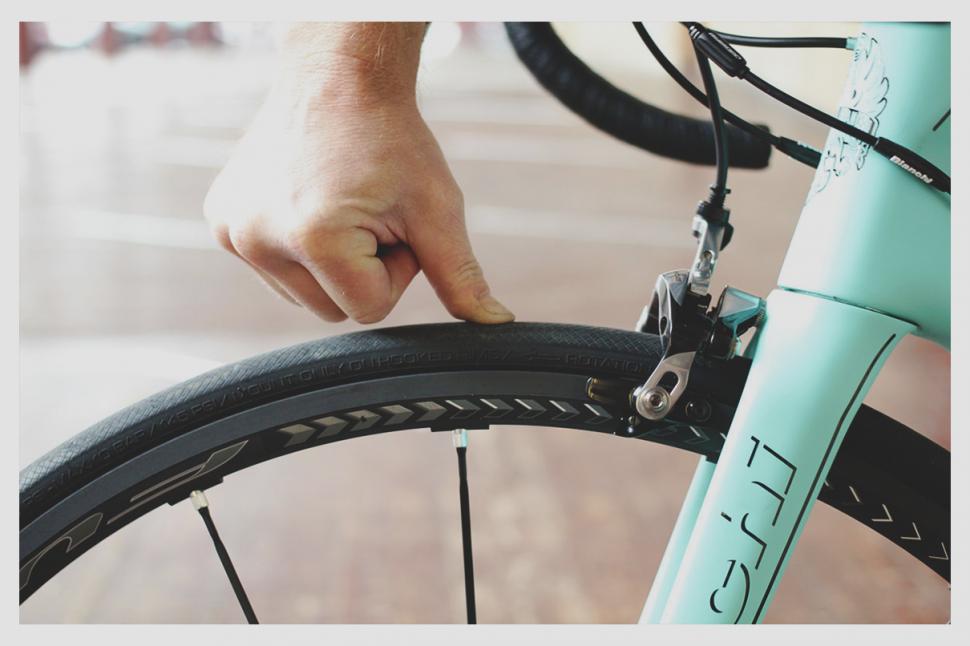


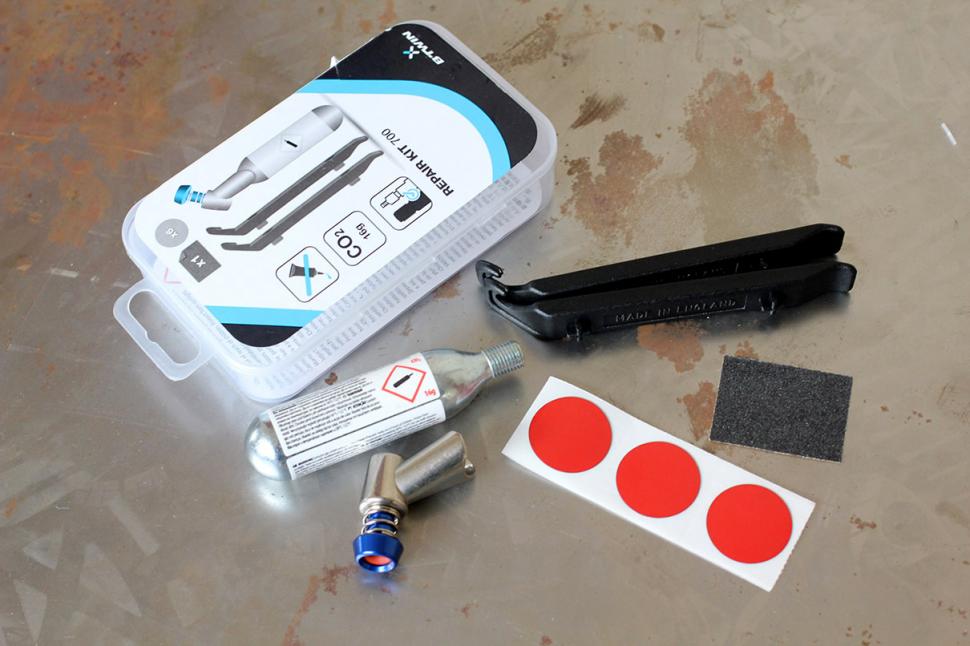
Add new comment
79 comments
For commuting, use Schwalbe Marathon Plus and check tyre pressure regularly. I have never had a puncture with these tyres. The heaviness of the tyre means you regular commuter ride will be a better workout.
For non-commuting, go tubeless. You won't regret it Schwalbe One or Pro One is the way to go.
Conti GP4000 are lovely tyres but you will get punctures, 4 season not much better in that regard.
If you are running clinchers with tubes and have to fit a new tube roadside, the advice about refitting at home in clean environment is very good advice.
100% guaranteed only way to avoid punctures - don't ride a bike. But riding a bike and fixing punctures is still better. All day long.
This is working so far, Roubaix Tubeless. I'll probably be walking home covered in latex for posting that!
I also have a pair of Schwalbe Snow Studs that have never punctured despite plenty of off road abuse and riding them in filthy conditions, I'm tempted to set them up ghetto tubeless for the coming winter.
WTF? totally wrong...
The Guide: How to fit tubeless tyres link doesn't work ("Sorry we can't let you access that page")
Or is it just me?
When I'm doing a long ride ( see my blog for what I mean by this) I examine the tyres for small nicks. Not embedded flints but the tiny holes that they leave behind
Those nicks are weak points
If the tyre has more than 4 or 5 ( for a tyre like a Michelin Endurance) or 10 ( for a Marathon Supreme) I will change the tyre. Out of the dozens of long events I've done only had a situation once where a new, uncut tyre had a flat. Actually it was two, front and back - I guess I went over something nasty in the dark
The count of nicks isn't the same as the tyre being "worn out"
Tubeless are great but it is possible to hit a sharp too big to seal or to forget to top up the sealant every few months
On the other hand, I've never had a puncture using Conti GP 4 season - why would I change? All other things being equal it's purely a lottery when it comes to punctures I'm afraid.
tubeless may work for some but Ive just gone back to tubes after 5 different punctures in 2 miles on a schwalbe pro one.
Since then no punctures (150+ miles)
just be prepared and a puncture can be a nice break!
Tough as nails but about as sticky as them too unfortunately.
Some friends run Pro One tyres on tubeless set ups and have nothing but issues. Dogshit tyres. The non tubeless ones aren't much better - had to scrap one after a single ride to it cutting open.
Tubeless is probably the best way to avoid punctures. But like anything, if you don't set them up properly you will experience issues. Use decent rim tape on a clean and degreased rim. Use the correct amount of sealant. I use 60mil minimum for 28mm tyres. Once you've got them set up tubeless are fantastic for rolling resistance and stopping thorn, small glass shard punctures. Big tears will require an inner tube or tyre replacement like with a conventional tyre/inner tube setup.
Anyone would think the cafe owners were spreading tacks or something!
Yeah, I was going to point out the "Remove the inner tube and there’s nothing to puncture" line. If there was nothing to puncture, what holds the air in!
With inner tubes, small-ish holes in tyres dont' matter. With tubeless they most definitely do!
New tech is great but earlier this year I had an unrepairable puncture in a tubeless tyre and a seized valve so couldn't fit a tube. This happened on the first ride home at a new job 40 miles away!
Whatever you do you cannot avoid punctures, I don't get any fewer punctures now I ride tubeless but, they either seal up or are easier to fix with a noodle than the hassle of replacing a tube. but every now and then, when you get a puncture on a tubeless set up it's a total show stopper, unless you carry a needle and some fishing line!
Its down to tools/spares you carry. I agree a bad puncture on any version of tyre setup will stop you, unless you're carrying a new tyre and/or inner tube, sealant.
Its down to percentages, real life has shown me I get far less puntures with tubeless than with inner tubes.
I get the same ammount of punctures, point is that a puncture that would burst a tube like a bit of glass, thorn or piece of wire has no effect on your ride when you run tubeless, it just deals with it and all you see is a little wet patch on the tyre carcass.
This.
Also, if you're aware of going over glass, to call a stop once clear of it for everyone to do a quick tyre check. Did this last week and found a piece just in time.
It sounds like you're making quite the assumption there. I ride my Supersix with GP4000 tyres over stuff that looks a lot like the picture of the guy on the gravel path in this article. 10 miles each way over and down a 1000' hill each way. Those tyres have lasted a couple thousand km with several trips up that road. Nope, your road tyres likely won't be massacred in minutes on a New Forest path.
Cars never get flats because their tires don't have inner tubes. </s>
Odd observation, apart from my own experiences, my mate has just forked out £120 quid (11.8.17.) for two car tyre punctures.
Quite a fan of slime tubes on my clinchers. I was commuting over an industrial estate and the roads were covered with a large number of pieces of metal debris. The roads around here aren't the smoothest, either. The joy of weekly punctures. Fit slime tubes and the problem clears right up. Could also be that those little green caps deter malevolent co-workers from interfering with your unattended bike, as well.
My tips;
1. Pre ride check your tyres; you would be amazed the number of flints, glass splinters and small stones that get worked into your tyres. Even if nothing but a small cut is visible at the surface, take something pointy and have a little feel in the cut.
2. Tyre pressure; I actually found out that if you run too high pressure it can make it easier for flints and splinters to cut throught (ths was on a set of Challenge Strade Bianchas). Apparently running a lower pressure lets the tyre deform rather than separating. YMMV.
3. After riding over a sketchy bit of road, run your glove / finger tips over the tread of your tyres. This brushes off the sharp stuff before it can get embedded.
4. Forget all of the above and run Anti-Platt (some random German brand - check Bike24.com) puncture resistant strips. Ive done this all year ( a little over 2000km) and no p@&*tures yet (touch wood).
Fully agree with point 2, pumping up to the max inflation pressure is bonkers. Ground pressure is force/area so decrease ground ressure and those flints aren't forced in as hard. Plus you will go faster and be more comfortable (will feel slower though).
Re: point 2, there is a company out there that sells "tyre wipers", a little wire that attaches to the front of the mudguard and is adjusted to be just clear of the tyre.
Use neoprene wetsuit glue, takes 30 hours to set but remains flexible and really fixes the hole. I got that tip here so very happy to pass it on.
We used to make those ourselves back in the dark days before decent tyres. They're brilliant, they flip debris out after half a rotation, before it gets driven through the tyre by subsequent rotations.
Just a bit of observations.
I find that so-called puncture resistent tyres are not worth the price. Conti 4000 Sii punctured very often, replaced with Durano plus after 200 miles: two punctures on the same ride within a week of buying them, replaced with Specialized Armadillo Elite after 400 miles- better but got 3 punctures last year. I would say that on average my cheap Vittoria Zaffiro has the same number of punctures. So I'm done with the hyper expensive winter tyres. On my racer my Zaffiro Slicks haven't had one single puncture after more than 3,000 miles. So I will replace the Armadillos with Zaffiro when they're done.
Beware of cycleways and round-abouts. Most of my punctures, if not all, have happened in those places. Grit and flints are probably thrown on the cycleways by cars.
It's worth remembering that those fatter MTB and BMX tyres are a lot easier to remove from a rim too. This can save a lot of Anglo Saxon language use if you've forgotten your tyre levers.
Don't ride Italian tyres on loose chipped surfaces.... 3 punctures in the last two rides. Vittoria tyres are now where they belong - in the bin - and I'm back on Contis...
Agreed - suffered 3 punctures in 4 days a few weeks ago (pinch flat, faulty valve, shard of glass), since stocking up on inner tubes I've had no issues!
That's funny, I have the same experience. Ridden 4,000 miles on the Vittoria Slick clinchers without one puncture. All other tires I've tried have punctured, even the so-called tough winter tires.
Pages